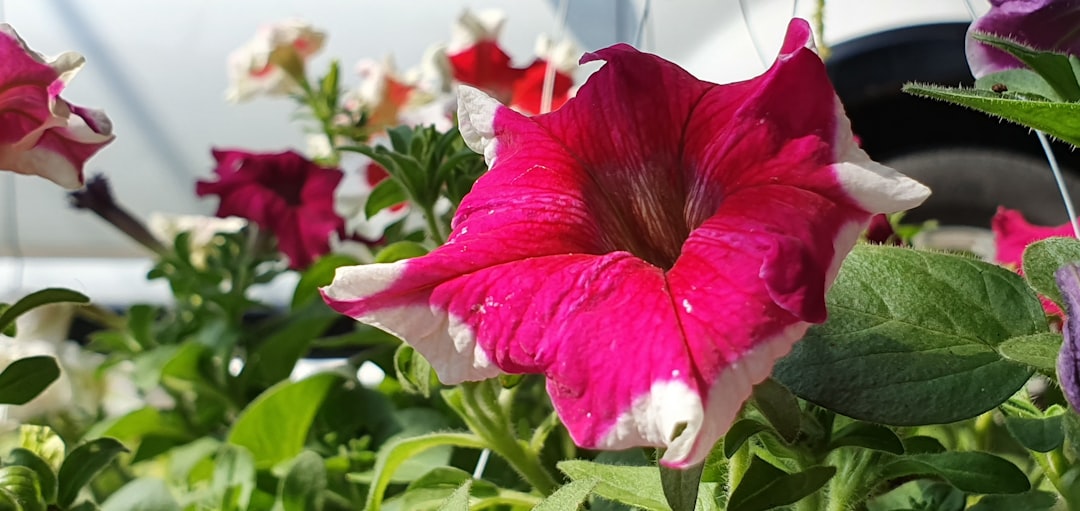The Enchanting Allure of Cotoneaster in Your Garden

Gardening is a delightful endeavor that allows us to connect with nature and create a beautiful outdoor space. One plant that can add a touch of elegance and charm to your garden is the cotoneaster. This versatile groundcover, with its small deep - green leaves, is not only aesthetically pleasing but also serves as an attractive backdrop for the rest of your garden.
Cotoneaster belongs to the Rosaceae family and encompasses a wide variety of species. Some are low - growing groundcovers, while others can grow into small shrubs or even small trees. The small, deep - green leaves are one of its most distinctive features. These leaves are often oval or lance - shaped, with a smooth texture that gives them a shiny appearance. In the spring, cotoneaster produces small, white or pinkish flowers that are a magnet for pollinators such as bees and butterflies. These flowers are followed by bright red or black berries in the fall, adding a splash of color to the garden during the cooler months.
One of the main advantages of using cotoneaster as a groundcover is its ability to spread and form a dense mat. This helps to suppress weeds, reducing the need for constant weeding in your garden. It also provides excellent erosion control on slopes, as its roots hold the soil in place. The dense foliage of cotoneaster can also provide shelter for small wildlife, such as birds and insects, creating a mini - ecosystem in your garden.
When it comes to planting cotoneaster, it is relatively easy to grow. It prefers well - drained soil and full sun to partial shade. Most cotoneaster species are hardy and can tolerate a wide range of temperatures, making them suitable for many different climates. Before planting, prepare the soil by adding organic matter such as compost or well - rotted manure. This will improve the soil structure and provide essential nutrients for the plant.
Dig a hole that is slightly larger than the root ball of the cotoneaster plant. Place the plant in the hole, making sure that the top of the root ball is level with the surrounding soil. Backfill the hole with soil, gently firming it around the base of the plant. Water the newly planted cotoneaster thoroughly to help settle the soil and eliminate any air pockets.
Once established, cotoneaster requires minimal maintenance. Water it regularly during the first growing season to help it develop a strong root system. After that, it is relatively drought - tolerant and only needs watering during extended periods of dry weather. Pruning is also an important part of cotoneaster care. You can prune it in the late winter or early spring to shape the plant and remove any dead or damaged branches. This will encourage new growth and keep the plant looking healthy and attractive.
Cotoneaster can be used in a variety of garden settings. As a groundcover, it can be planted along walkways, in rock gardens, or under trees. Its low - growing habit makes it an ideal choice for filling in bare spots in the garden. If you have a larger garden, you can also use cotoneaster as a hedge or a border plant. When used as a hedge, it can provide privacy and define the boundaries of your garden.
Another great way to incorporate cotoneaster into your garden is by combining it with other plants. It pairs well with other shrubs and perennials, such as lavender, roses, and daylilies. The deep - green leaves of the cotoneaster provide a beautiful contrast to the colorful flowers of these other plants, creating a visually appealing display.
In addition to its aesthetic benefits, cotoneaster also has some practical uses. The berries of some cotoneaster species are edible, although they are not commonly consumed by humans. However, they are a valuable food source for birds, especially during the winter months when other food is scarce. By planting cotoneaster in your garden, you can help support local bird populations.
Overall, cotoneaster is a wonderful addition to any garden. Its small deep - green leaves, beautiful flowers, and colorful berries make it a visually appealing plant. Its ease of growth and low maintenance requirements make it a great choice for both novice and experienced gardeners. Whether you use it as a groundcover, a hedge, or in combination with other plants, cotoneaster is sure to enhance the beauty of your garden and provide a haven for wildlife.
So, if you're looking for a plant that can add a touch of elegance and functionality to your garden, consider growing cotoneaster. With its many benefits and attractive features, it is a plant that you won't regret adding to your outdoor space.